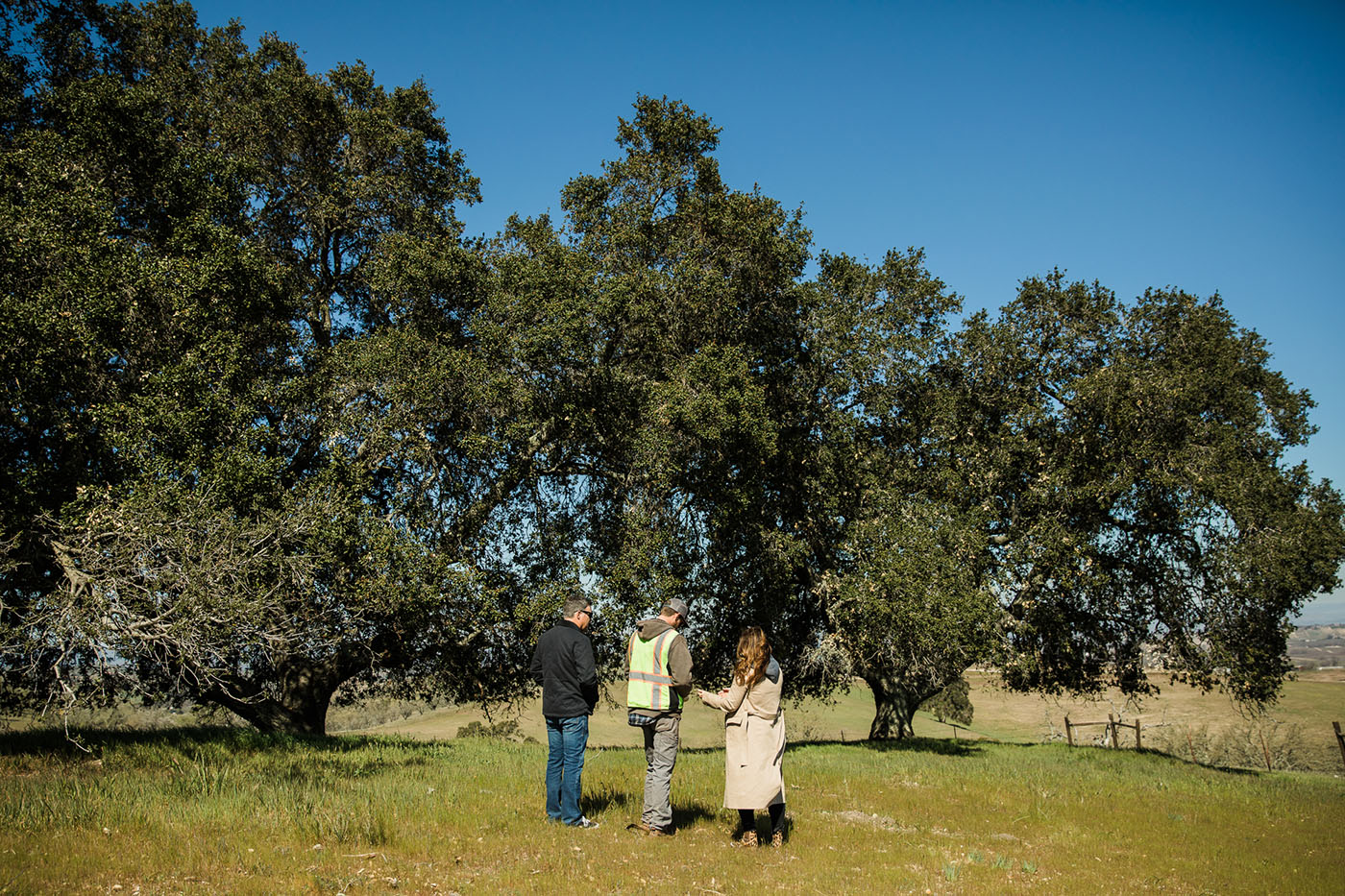Guide to Tree Care in Paso Robles
A Local’s Guide to Tree Care in Paso Robles: Oaks, Street Trees & Common Problems

Paso Robles is known for its iconic oaks, dry summers, and strong sense of community. But when it comes to tree care, local property owners face strict city regulations, extreme climate conditions, and common tree diseases like fire blight and mistletoe. Whether you’re managing a rural property or an in-town landscape, knowing how to care for trees in Paso Robles is essential — and sometimes legally required.
This guide walks you through native tree protections, permit requirements, common disease issues, and smart planting practices based on the latest local trends.
Protected Oaks in Paso Robles: Know the Rules
Paso Robles — “The Pass of the Oaks” — protects all native oaks under Ordinance No. 835.
Protected Species Include:
- Blue Oak (Quercus douglasii)
- Valley Oak (Quercus lobata)
- Coast Live Oak (Quercus agrifolia)
Any oak tree with a trunk diameter of 6 inches or greater (DBH) is protected. That means:
- Trimming a limb 6″ or more in diameter usually requires a Permit to Prune
- Removing a protected oak requires a Permit to Remove, a certified arborist report, and often City Council approval
- Violations may result in fines, stop-work orders, and mandatory tree replacement
View the full Paso Robles Oak Tree Ordinance & Permit Requirements at: yourdomain.com/oak-tree-ordinance-paso
Street Trees & “Police Trees”: What You Can and Can’t Touch
What Is a Street Tree?
If it’s planted in a sidewalk strip, a median, or a public easement, it likely belongs to the City of Paso Robles — not the property owner.
Locals often call them “police trees” because trimming or removing them without permission can lead to code enforcement action.
What to Do:
- Do not prune, cut, or remove city trees
- Report hazards or issues to the Parks Maintenance Division at 805‑237‑3873
- Let the City or an approved contractor handle it
Trees in Trouble: What’s Declining in Paso Robles
Paso’s climate and soil create challenges for certain non-native or shallow-rooted trees. Here’s what to watch for:
- Fire Blight in Bradford Pears
- A bacterial disease that blackens shoots and scorches flowers.
Solution: Prune 12 inches below the infected area, sanitize tools, avoid excess nitrogen, and consider replacement if blight is severe.
Birch Trees – Short Lifespan in Heat
Not well suited to Paso’s dry heat and heavy soils. Symptoms include crown dieback, peeling bark, and bronze birch borer infestation.
Recommendation: Replace with a heat-tolerant species.
Locust Trees – Mistletoe Infestation
Honey locust and black locust trees are prone to parasitic mistletoe, leading to dieback and decline.
Solution: Prune well below infection point, monitor for re-emergence.
Cottonwoods – Aggressive Roots & Limb Drop
These fast growers often break down early, dropping limbs and lifting sidewalks. Prone to root damage and fungal cankers.
Willows – Short Life & Mistletoe Problems
Willows suffer from mistletoe, fungal decay, and weak branch structure. Most only live 15–20 years in Paso. Also known for damaging root systems.
When to Prune in Paso Robles
Oaks: Late summer to fall only (to reduce fungal risk)
Bradford Pears: Late winter or immediately after bloom
Birches and Locusts: During winter dormancy
Cottonwoods and Willows: Only as needed — avoid aggressive pruning
City Trees: Never prune yourself — report issues to Public Works
Avoid pruning during heatwaves or wet conditions. Bad timing increases risk of disease, pests, and stress.
Tree Permit Overview
Prune oak limb ≥6 inches: Yes, unless exempt. $50 per tree.
Remove protected oak: Yes. Requires arborist report and city approval.
Trim or remove city street tree: Not allowed. Contact Public Works.
Remove dying birch, willow, locust, cottonwood: No permit required, but documentation is advised.
Official permit forms and instructions: prcity.com/226/Tree-Trimming-Removal
Best Trees to Plant in Paso Robles (Quick Guide)
Looking to replace a declining tree or plant something new? Choose species that can handle Paso Robles’ dry summers, clay soil, and wildfire risks.
Recommended:
- Chinese Pistache (colorful, drought-tolerant)
- Crape Myrtle (compact, flowering)
- Strawberry Tree / Arbutus unedo (evergreen, low water)
- Blue Oak (native, extremely hardy)
- Valley Oak (large shade tree)
- Coast Live Oak (evergreen native)
Avoid:
- Bradford Pear (fire blight-prone)
- Birch (sensitive to heat, short-lived)
- Willow (mistletoe, root damage, weak structure)
- Cottonwood (limb drop, invasive roots)
- Eucalyptus (fire hazard, brittle limbs)
Work With a Certified Arborist
A certified arborist can help you stay compliant with city ordinances, identify disease or decay, and safely manage pruning or removals.
4th Generation Tree offers:
- Tree evaluations, removals, and trimming
- Permit support and arborist reports
- Emergency services and fire safety clearance
- Mulch delivery through Arbor Mulch
Final Takeaways for Paso Robles Tree Owners
Know the oak tree laws before trimming or removing native trees
Never prune or remove a city tree — call Public Works
Watch for fire blight, mistletoe, and heat-related decline
Plant smart, drought-tolerant trees that match the Paso climate
Call a certified arborist for any major tree work or permit help
For expert help, visit 4gtree.com — your trusted local tree care professionals in Paso Robles and San Luis Obispo County
